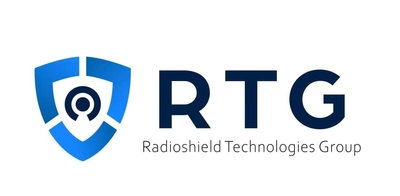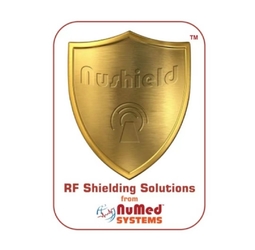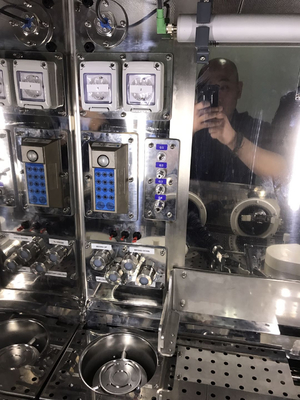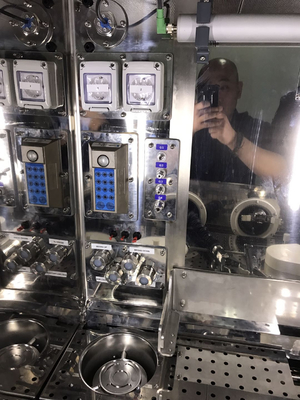-
Copper Foil Shielding
-
RF Shielded Doors
-
RF Shielded Windows
-
Radiation Protection Lead Glass
-
Non Magnetic Tool Kit
-
Nuclear Radiation Protection
-
Nuclear Radiation Detector
-
RF Shielded Chamber
-
Honeycomb Waveguide Air Vents
-
Conductive Adhesive Copper Tape
-
Copper Wire Mesh
-
X Ray Lead Glass
-
EMI Shielding Gasket
-
Electrically Conductive Fabric
-
Radiation Protection Door
-
Radiation Protection X Ray
-
Faraday Cage MRI
-
Copper Wire Wool
-
MRI LED Lighting
-
Non Magnetic Wheelchair
-
Non Magnetic Stretcher
-
 AnasBrass honeycomb vent Looks Very Nice
AnasBrass honeycomb vent Looks Very Nice -
 SatheeshMRI/RF doors are shining with handles, Thank you My friend.
SatheeshMRI/RF doors are shining with handles, Thank you My friend.
Gallium-68 shielded hot cell with 2 glove ports for PET/SPECT CT Radiopharmaceuticals

Contact me for free samples and coupons.
Whatsapp:0086 18588475571
Wechat: 0086 18588475571
Skype: sales10@aixton.com
If you have any concern, we provide 24-hour online help.
x| Highlight | Gallium-68 shielded hot cell,PET SPECT CT radiopharmaceuticals glove ports,nuclear radiation protection hot cell |
||
|---|---|---|---|
Product Detail:
⁶⁸Ga-FAPI (Fibroblast activation imaging)
A hot cell (shielded workstation) is essential for safe ⁶⁸Ga handling, synthesis, and dispensing.
As the application of PET/CT in clinical diagnosis becomes more widespread, the value of positron nuclides is increasingly evident. 68 Ga is currently the most widely used positron nuclide, second only to 18F in its application in PET/CT.
With advent of gallium-labeling somatostatin analogs and its evaluation under positron emission tomography–computed tomography, there has been a tremendous surge in its application. Gallium 68 can be made available either from onsite cyclotron production or in the form of ready-to-use 68Ge/68Ga generators. Wherein setting up and running of cyclotron amounts to huge investment and dedicated team, the 68Ge/68Ga generator has proved to be a better option and viable project. Moreover, due to long half-life of 68Ge, i.e. 271 days, it enables the usage of generator for several months. The preparation of gallium-labeled peptides is much simpler in comparison to 18F radiochemistry, but the radiation exposure has always been an area of concern owing to high-energy annihilation photon of 511 keV.
Overall dimensions W1953×D1272×H2288 mm
Main box inner dimensions W900×D740×H700 mm
Sub box inner dimensions W680×D618×H640 mm
Cleanliness level:
The main chamber and the secondary chamber each contain a set of high-efficiency filter units (HEPA14 or above), ensuring that the cleanliness level inside the main chamber reaches Class A, while the cleanliness level inside the secondary chamber reaches Class C; the self-cleaning time should not exceed 15 minutes.
Activated carbon filter and exhaust system:
The exhaust section must be filtered through an activated carbon filter, which is installed within the lead shielding, at a dose rate of less than 2.5μSv/h at 30cm, with an exhaust pipe diameter of Ø50 mm.
Protective requirements:
The main box should have a protective thickness of 60mmPb on the front and bottom surfaces, and 50mmPb on the rear and top protective surfaces. The shielding thickness of the radioactivity meter's shielding well should be 50mmPb, and the tray of the lead can lifting system should not be less than 50mmPb. The secondary box does not have protective design.
Safety interlock:
The radiation monitoring interlocking device can detect the dose rate in internal spaces and requires the setting up of a fixed dose monitoring probe that is easy to assemble and disassemble, with a minimum threshold of 50µSv/h.
The control panel outside the hot room can display the dosage, while also featuring a dosage status light indicator. The red, yellow, and green colours represent high, medium, and low dosage statuses internally.
The radiation monitoring interlocking device ensures a safety interlock between dose monitoring and the hot chamber door. Interlock signal output: internal dose rate, protective door opening status, and inner cavity negative pressure value.
When power is lost, the closed door of the hot chamber can still remain locked.
![]()
Applications
The main uses of hot cells are in the nuclear energy industry and in nuclear medicine, specifically in the production of radiopharmaceuticals. However, they are also used in cleanroom environments for scientific research.




